A heavy wildfire season across much of Canada appears to have reached its peak on the West Coast, with British Columbia declaring a state of emergency as spreading wildfires saw more than 100 helicopters providing aerial firefighting support throughout the province.
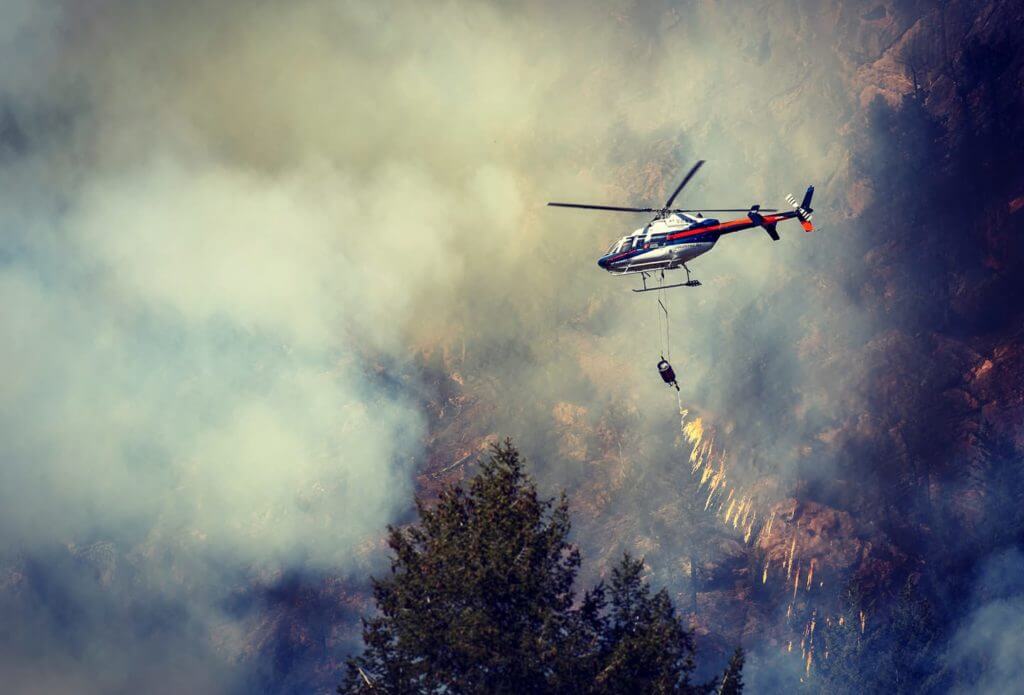
As of Aug. 14, there were 469 fires burning across B.C. – 255 of them being out of control. Across Canada, B.C. has been hit by the most wildfires (1,677) and seen the most hectares burned (373,801) of any province so far this year, according to the Canadian Interagency Forest Fire Centre (CIFFC).
“I think pretty much every helicopter in Western Canada is engaged in the wildfires right now,” said Robert Gallagher, owner and president of Coldstream Helicopters based in Vernon, British Columbia.
Coldstream has five helicopters on casual hire for the B.C. fires – mainly Bell 212s with one Bell 407 – some of which are used for water bucketing or crew transport. The company also has two aircraft that are designated ignition machines, making use of a helitorch.
“The sizes of the fires are smaller, but there are more of them – which taxes resources a lot more,” said Gallagher.
In declaring the state of emergency on Aug. 15, Mike Farnworth, the province’s Minister of Public Safety and Solicitor General, said it would ensure B.C. had access to all provincial, federal and local resources necessary to assist with firefighting efforts and to keep the public safe. The state of emergency will last for a minimum of 14 days.
Nearly every part of the province remains under a high-to-extreme fire danger rating, and the wildfire smoke has been a growing issue over the last few days.
“Some of the heavy smoke has been hampering flight operations; aircraft can’t fly because the smoke is so thick,” said Coldstream’s Gallagher. “It’s a bit of a contributing factor because the fires obviously aren’t being actioned, which makes them larger when we can’t fly, which increases the amount of smoke. So it’s a bit of a catch-22.”
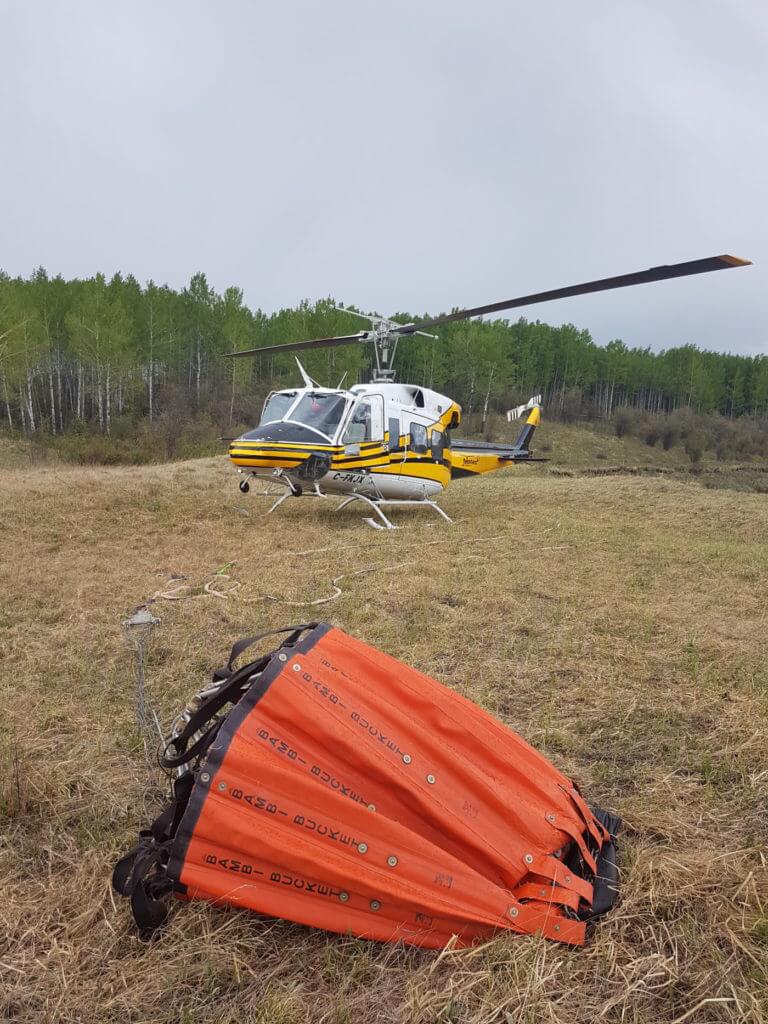
According to Charlie Mooney, director of corporate development at Yellowhead Helicopters in Valemount, British Columbia, virtually all the smoke being produced from B.C. wildfires is staying over top of the province right now.
“I was talking to one of the fire centers a few days ago, and in one of the complexes up near Quesnel they had 25 helicopters in total that they had on hire in that one area,” Mooney said. “But it was so smoky there were only two of them that got out to be able to work — the rest of them were sitting on the ground.”
Yellowhead Helicopters has 13 out of its nearly 40 aircraft on contract with the province for wildfire support, which include the Bell 212HP, Bell 212 Single, Bell 206 B3, Bell 407HP, and Airbus AS350 B2.
Mooney told Vertical some of the aircraft the company has been able to put out on fires were actually scheduled for other jobs. But because of the extreme fire hazard and fires, some of the projects have been postponed until it’s safe for crews to be out in the backcountry.
The province currently has 108 helicopters in the air to support firefighting operations. Wildcat Helicopters, based in Kelowna, British Columbia, is another operator that has been hired by the province to provide fire-support aircraft.
Wildcat has four helicopters on long-term contracts with the B.C. Wildfire Service – two Bell 412s and two sustained action Bell 212s. All four aircraft are belly-tank equipped for fire suppression, but Wildcat Helicopters’ owner/operator Mike Michaud said the helicopters perform a variety of roles that support firefighting efforts, based on what is needed at the time.

Elsewhere in Canada, Ontario has also been hit hard by wildfires, with 1,060 fires burning 233,089 hectares from April 1 to Aug. 14. The 10-year average from April 1 to Aug. 14 is 597 fires, with 2017 seeing 561 fires for the same time period.
“It’s been a very active fire season for us, especially in northeastern Ontario . . . we haven’t seen this type of fire season here in the northeast in quite some time,” said Shayne McCool, fire information officer at the Ontario Ministry of Natural Resources and Forestry (MNRF).
“We’ve seen a lot more high-profile fires that have impacted people and their properties much more than they have in [the] recent past.”
The above-average number of wildfires in Ontario has meant more helicopters in the air for fire suppression, monitoring purposes and ground crew support.
“Helicopters are a major part of our operation,” McCool said. “They’re utilized as a resource for transporting people/fire attack crews in and out, they could be used for fire suppression, [and] they could be used for lookout purposes to keep an eye on the fire situation to ensure our people are safe.”
Aircraft come in handy especially when a fire starts in a remote location with no road access, he added.
There are 107 fires currently burning in the province, and 42 casual hire helicopters on duty (aircraft are hired as and if needed, with no guaranteed days of work). The last two weeks of July in 2018 were a busy time for aircraft in Ontario, with casual hire helicopters reaching peak numbers of 35 intermediates, 47 mediums and five heavies. The province has recently called the heavy-lift helicopters off, and currently has 20 intermediate and 25 medium helicopters on casual hire.
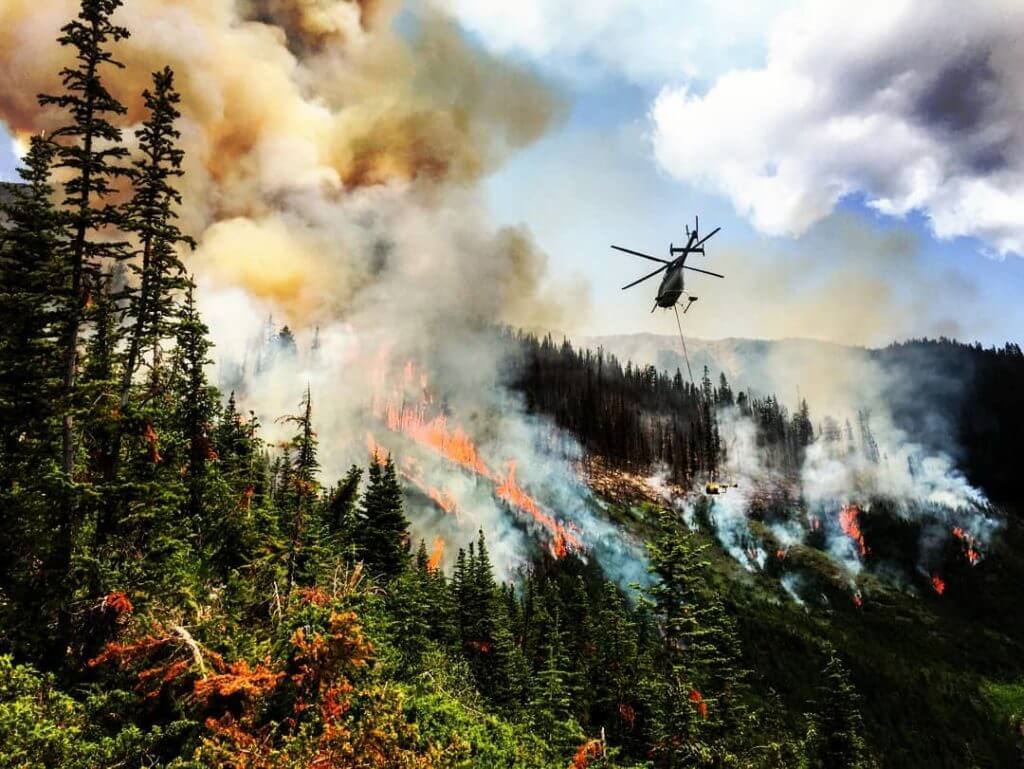
Along with the MNRF’s fleet of Airbus EC130s – which monitor land for new fires and bring fire attack crews and equipment into response areas – the ministry has hired roughly a dozen helicopter operators from all across Canada to provide fire-support aircraft.
Heli Muskoka, based in Gravenhurst, Ontario, is one of the operators providing helicopters on a short-term contract with the MNRF. The company’s Bell 206L3 Long Ranger was recently stationed in Sudbury, Ontario, flying as an Incident Command Level 3 (IC3) machine that supports fire crews on the ground when possible.
But aircraft duties change as needed with firefighting operations. Heli Muskoka’s chief pilot and operations manager, Jay McMackin, told Vertical the company’s Long Ranger had acted as a Bird Dog-like aircraft for the Parry Sound 33 and North Bay 72 fires, which guided the heavy helicopters hired by the province for bucketing suppression. At the same time, Heli Muskoka also had its Airbus AS350 SD2 in the air, and while it’s not currently on contract, McMackin is hoping to get it back up flying soon.
“It’s been extremely busy,” he said. “Pilots are hard to come by, and that’s why our AStar is actually sitting. It took me a while to get a third pilot into our rotation, just because of the experience levels required. . . . We didn’t have enough pilots to crew both machines – we were time-maxing the two pilots that we had.”
In Ontario, the normal maximum flight time for pilots in a 30-day period is 120 hours, but this can be extended to 150 hours in 30 days. McMackin said with this busy fire season, Heli Muskoka’s pilots were getting their maximum expansion of 150 flight hours in 30 days.
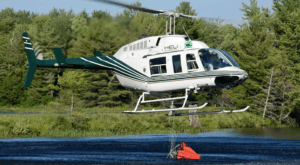
In contrast to Ontario and B.C., wildfires in Alberta have recently calmed down, with 20 fires currently burning in the province – all of which are under control. Paul Spring, president of Phoenix Heli-Flight in Fort McMurray, Alberta, said this fire season has brought fluctuating periods of high numbers of fires followed by significant reductions. However, from April 1 to Aug. 14, the Forest Protection Area of Alberta has reported 1,119 wildfires that have burned 52,510 hectares – up from 1,001 fires and 9,572 hectares from April 1 to Aug. 14 during the 2017 wildfire season.
With British Columbia neighboring Alberta, some of the heavy smoke from the spreading B.C. fires has made its way to areas of Alberta and is interfering with visibility for airport control towers, according to Spring.
“You have to fly patrols if you’re going to find a new fire,” Spring said. “So we had one [fire] that was found by our H130 with its initial attack crew while they were out on patrol. It was a lightning strike, but because of the smoke we were down to three-quarters of a mile visibility at the airport — the lookout towers didn’t stand a chance.”
From its all-Airbus fleet, Phoenix Heli-Flight currently has its AS350 B2, AS350 B3, H130 and two H120 helicopters flying on casual hire in the province for fire assessment or initial attack purposes. Spring said right now the company’s pilots are flying roughly 2.5 to three hours out of an eight- or nine-hour day, which is considered to be fairly low.
“We’re just waiting now, waiting on weather,” he said. “We could get the right conditions two days from now, and everybody could be flying crazy hours trying to put out fires.”





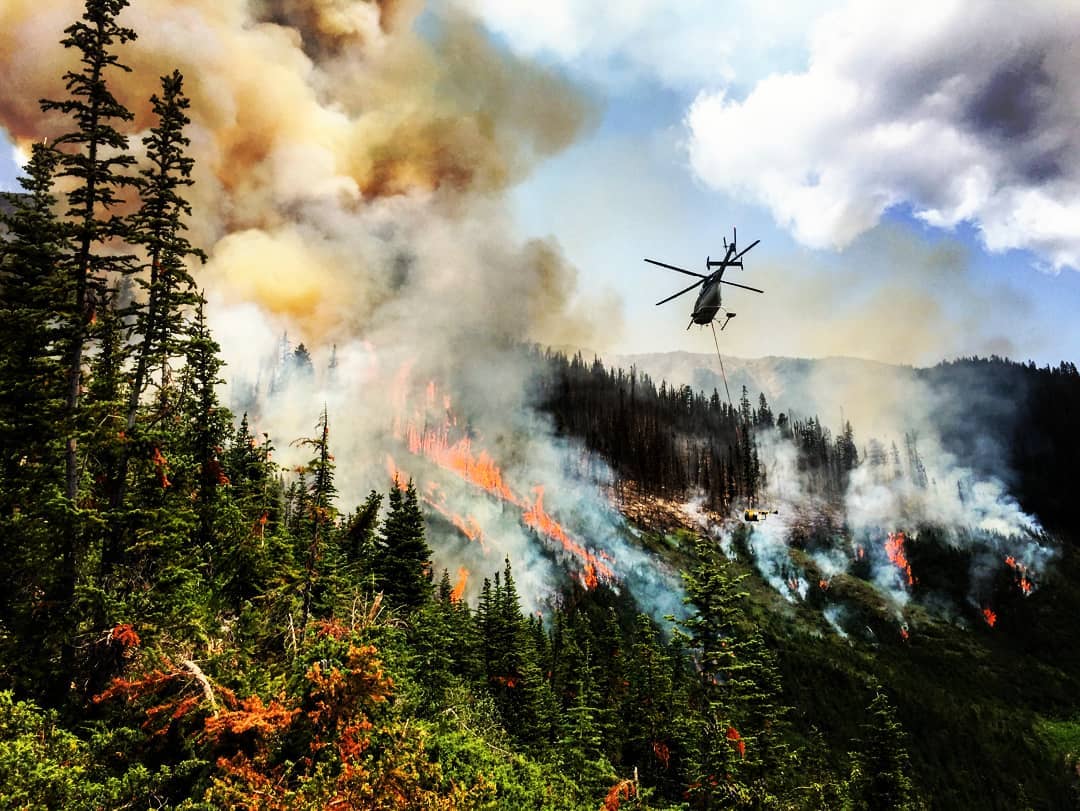




“Pilots are hard to come by, and that’s why our AStar is actually sitting. It took me a while to get a third pilot into our rotation, just because of the experience levels required. . . . We didn’t have enough pilots to crew both machines – we were time-maxing the two pilots that we had.”
Perhaps if the industry as a whole was willing to take on the numerous low time pilots out there desperate for a chance at a flying gig then there wouldn’t be a shortage of experienced pilots.